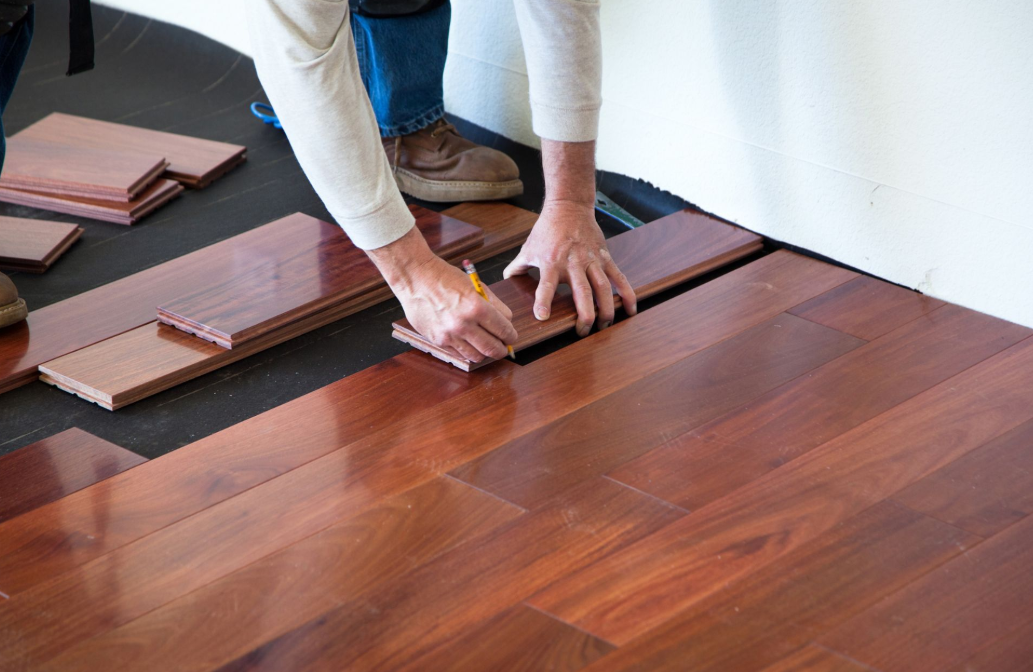A finished basement can contribute so much to a home, like an extra bedroom, a home theater, a cozy lounge, or even a gym. But turning that often-overlooked space into something warm and livable comes with a few challenges, especially when it comes to choosing the right flooring.
Traditional hardwood doesn’t always hold up well below ground level. That’s where engineered hardwood floors make a difference. This blog takes you through why they work well in basements, how they’re built to handle moisture, and what to keep in mind if you’re planning to use them in your own space.
What Makes Basements Hard to Work With?
Before you even think about flooring, it’s good to understand why basements behave differently from other rooms. The biggest issue is moisture. Because basements sit below ground, they’re more likely to have dampness in the air or water that seeps in through concrete walls or floors. Even when things seem dry, changes in temperature can create small pockets of humidity.
This means that floors need to be stable. They can’t shift or swell every time the weather changes or the furnace kicks on. Concrete subfloors, common in basements, don’t help much either, especially if they hold any leftover moisture.
So, whatever flooring you choose needs to stay calm and collected even when the space doesn’t.
What Makes Engineered Hardwood Different?
Engineered hardwood floors aren’t made the same way as solid hardwood. Instead of being a single thick piece of wood, each board has several layers. The top is real hardwood with oak, maple, hickory, or another species you’d see in solid flooring. Below that is a core made from plywood or similar materials stacked in a crisscross pattern.
That layered setup makes the board more stable. It moves less when humidity rises or falls. In a place like a basement, where moisture can sneak in, this matters. It means your floor won’t warp or gap as easily.
Even better, engineered hardwood floors come in a range of finishes and sizes. You’ll find wide planks, hand-scraped surfaces, or matte coatings that give the room a modern or rustic look, depending on what you like.
Why Engineered Hardwood Works So Well Downstairs
When you lay flooring in a basement, the main concern is movement, including wood shrinking, expanding, or lifting over time. Engineered hardwood handles all of this better than solid boards. That cross-layered structure we mentioned earlier? It helps the floor stay put, even if moisture levels change slightly.
It’s also more flexible when it comes to how it’s installed. You can float it over an underlayment, glue it directly to concrete, or even use click-lock systems that make installation quicker. Solid hardwood often needs to be nailed down, which isn’t an option on a concrete floor.
Some engineered floors are even designed with extra water resistance. While that doesn’t make them fully waterproof, it does give you peace of mind in case of light spills or mild basement dampness. Just make sure the product you pick is approved for below-grade use; some are made specifically with basements in mind.
And yes, you still get that real wood surface. So, unlike vinyl or laminate, the floor feels and looks like actual hardwood, because it is just built smarter.
Style Without Compromises
You might think basements are all about function. But that doesn’t mean they can’t look good too. With engineered hardwood, you can bring in warmth, color, and texture without worrying about damage later.
Want the basement to match your main floor? You can find engineered planks in the same species and finishes. Prefer a cozy, cabin-like feel? Go for hand-scraped oak or reclaimed wood styles. The options are wide, and they all keep that natural wood character.
What to Know Before You Install
Installing engineered hardwood in a basement isn’t hard, but a little prep work goes a long way. Start by checking for moisture in your concrete slab. There are basic tests you can buy for this, or you can ask a pro to check it.
If the levels are acceptable, you’ll want to use an underlayment that includes a vapor barrier. This adds a protective layer between the floor and the concrete. It also helps cushion the boards and reduce sound.
Make sure your concrete is level. Uneven spots can cause boards to move or wear down faster. You’ll also want to let the flooring sit in the room for a few days before installation. This time helps the wood to adjust to the temperature and humidity.
You can install the boards yourself if you’re handy, but many people prefer hiring someone, especially if the room has odd corners, built-ins, or stairs.
Looking Ahead
Basements are no longer cold, dark storage rooms. More people now treat them like valuable living space. That shift calls for smarter choices, especially when it comes to what’s under your feet.
Engineered hardwood floors make a lot of sense here. They offer the charm of real wood and the strength to deal with basement challenges. As manufacturers keep improving these products, adding better cores, more moisture resistance, and easier installation, you can expect even more flexibility in how and where they’re used.
